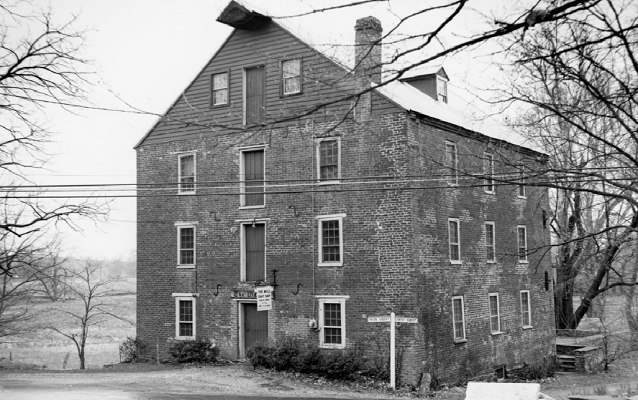Last updated: August 2, 2018
Place
Waterford Historic District

The town of Waterford, Virginia is a remarkably intact example of an early 19th-century rural village surrounded by historic farmland. Its quiet shady streets remain lined with examples of different historic architectural styles from the 18th and 19th centuries. Buildings display a variety of materials including brick, stone, and log. Remarkably, the town has retained its historic agricultural setting with only minor intrusions. Waterford conveys the same ambiance that characterized it during its heyday as a flour milling town in the 19th century.
In the early 1730s, Pennsylvanian Amos Janney and fellow worshipers of the Society of Friends built a mill complex along Catoctin Creek in what is now central Loudoun County. They established a town, first called Janney’s Mill, and later Milltown, around the venture. Despite its remote location, the area’s rich soil attracted grain farmers. The still-standing Quaker Meetinghouse was erected in 1740. In the 1780s, the town was renamed after Waterford, Ireland.
Although the town drew Quakers from Pennsylvania, other religious groups, like Scotch-Irish Presbyterians and German Lutherans also settled here. Some landowners brought enslaved African Americans with them despite the dominant Quaker objection to the practice. By 1830, free African Americans also comprised a significant portion of the population—black people headed one fourth of the town’s households.
By the 1830s, Waterford had become a flourishing community of about seventy houses with a tannery, a chair-maker, a boot manufacturer, a blacksmith’s shop, and a tavern. The town also established a schoolhouse and a library for the growing community. The Loudon Mutual Insurance Company, founded in 1849, still operates today.
The mid-19th century was the town’s economic heydey. As America roared towards Civil War, many of the town’s Quaker farmers became disillusioned with Virginia’s inexorable attachment to slavery. Waterford lost business as farmers moved west to free states like Ohio. Likewise, in the 1830s, two recent innovative trade routes—the Baltimore and Ohio Railroad and the Chesapeake and Ohio Canal—created new centers of commerce along their routes, which soon surpassed Waterford. Mills began to locate closer to the railroads, canals, and later turnpikes, syphoning off valuable commerce once enjoyed by the Waterford community.
While the Waterford economy continued to decline, the United States outlawed slavery, won the Civil War, and encouraged black education across the American South. In 1866, the Waterford African American community bought land on Second Street and erected the first black school in Waterford. The one-room wood building housed both religious and educational activities. Sarah Ann Steer, a white Quaker who lived across the street, was its first teacher. The school still stands.
By the turn of the 20th century, Waterford had fallen into disrepair. Yet the lack of commercial endeavors in and around the town left it remarkably free of modern intrusions. In 1943, descendants of village families and newcomers interested in preserving the buildings, traditions, and rural character of Waterford formed the non-profit Waterford Foundation.
The Foundation has played an important role in revitalizing the physical fabric of Waterford as well as increasing the public's knowledge of life and work in an early American rural community. This group also preserved the Second Street School, which closed in 1957, and restored its interior back to its 1880s appearance. There are more than 100 properties in Waterford protected by easements through a variety of conservation organizations. Significantly, today visitors experience many of the same views as those Waterford residents of two centuries ago.
Sources:
“About Waterford Virginia.” The Village of Waterford Virginia.
“Waterford’s Beginnings.” The History of Waterford Virginia.
“Waterford's Second Street School.” The History of Waterford Virginia.
National Historic Landmark Nomination of the Waterford Historic District.
National Historic Landmarks (NHLs) are historic places that possess exceptional value in commemorating or illustrating the history of the United States. The National Park Service’s National Historic Landmarks Program oversees the designation of such sites. There are just over 2,500 National Historic Landmarks. All NHLs are also listed in the National Register of Historic Places.
